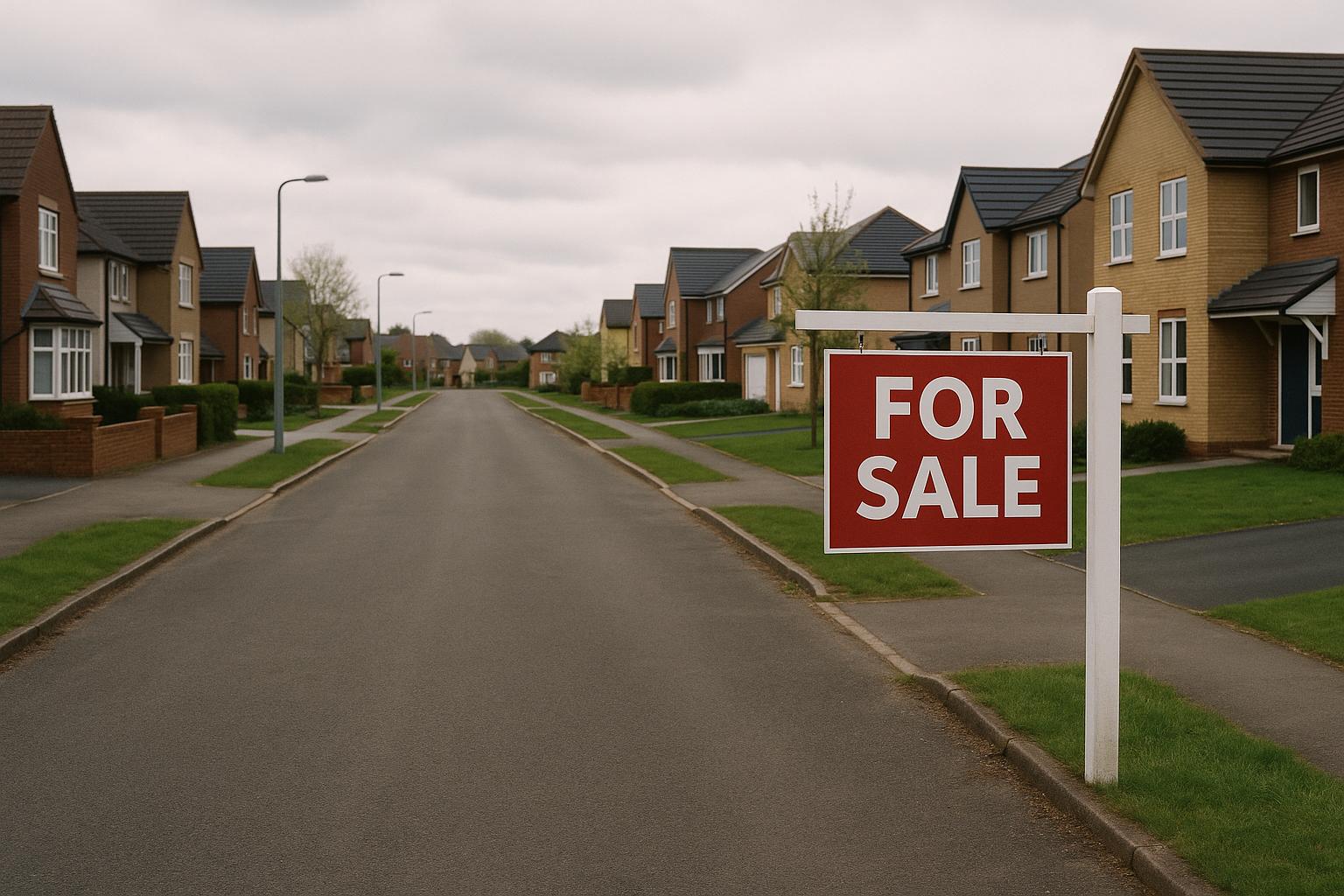House prices in the UK are widely expected to rebound in 2026, with forecasts ranging between 4% and 5% growth, signalling a potential turning point after several challenging years for the housing market. According to analysis by LandlordBuyer, which draws on input from economists and major estate agents, this anticipated rise follows modest growth of around 2.5% in 2025. If these projections hold, the average UK home—currently valued at approximately £280,000—could surpass the £300,000 mark by the end of next year.
Analysts attribute the forecasted recovery to a combination of falling interest rates, which are expected to ease borrowing costs, and improving affordability for buyers. A Reuters poll of property analysts corroborates this outlook, predicting a 4% national increase in house prices in 2026, with London expected to match this figure and other regions, such as the North West and Yorkshire & Humber, potentially seeing even stronger growth. Long-range analysis from Savills also supports these trends, suggesting a cumulative rise of over 21% by 2029, led by regional hotspots where house prices could climb by nearly a quarter over the next five years.
Jason Harris-Cohen, managing director of LandlordBuyer, emphasised the significance of the forecasted growth for landlords: “After several challenging years driven by rising interest rates, increased regulation, and squeezed affordability, the forecasted rebound in 2026 offers a welcome turning point. With over a third of landlords reportedly considering exiting, 2026–2027 could prove a defining window for decision-making.” He added that the improving market conditions may stimulate renewed investment and demand across the sector in the latter half of the decade.
While the overall outlook appears positive, there are some nuances and divergent views on regional performances. For instance, Capital Economics predicts that London could see a sharper rise of around 6.5% in the next year, reversing nearly a decade of underperformance in the capital. This optimistic forecast is attributed to London’s limited housing supply, relaxed lending criteria, and falling mortgage rates, which may boost borrowing capacity despite historically high price-to-earnings ratios. However, other experts, such as those from Knight Frank, are more cautious, anticipating a more modest 3% increase in London that lags behind the national average, citing affordability constraints and weaker demand rejuvenation as limiting factors. Jeremy Leaf, a former RICS residential chairman, noted to MoneyWeek that price growth in London will be uneven and highly dependent on location and property type.
The recent months have seen early signs of market activity reflecting these dynamics. Nationwide reported a stronger-than-expected 0.4% rise in house prices in February 2025, driven partly by buyers accelerating purchases before the expiry of a tax break. While this uptick exceeded forecasts, Nationwide’s chief economist, Robert Gardner, warned of short-term volatility due to policy changes, suggesting a spike in transactions in March followed by a slowdown. Furthermore, Zoopla’s index indicated a slowing national house price growth to 1.4%, linked to an increase in homes for sale that has provided buyers with more choice and put downward pressure on prices, particularly in the South and South East of England.
On the supply side, British homebuilder Persimmon has announced plans to increase home completions to around 12,000 in 2026, up from the 2025 target of 11,000 to 11,500. The company reported stronger-than-expected first-half earnings amid growing demand from private buyers but cautioned that ongoing cost pressures and affordability challenges could limit margin growth. This optimistic supply outlook aligns with the general recovery narrative but underscores persistent hurdles within the market, notably economic sluggishness and inflationary pressures.
Meanwhile, landlords continue to navigate a complex environment marked by regulatory concerns and economic uncertainty. Research from Market Financial Solutions shows that despite these challenges, a significant proportion remain positive about future prospects; 36% plan to expand their portfolios in 2025, and over half expect house prices to rise. However, concerns persist over tenants’ ability to pay rent amid inflation and cost of living increases, which landlords will need to carefully manage as they position themselves for the predicted market rebound.
In summary, the UK housing market appears poised for a meaningful recovery starting in 2026, driven by easing interest rates, renewed buyer demand, and increased supply from homebuilders. However, regional disparities, affordability constraints, and economic uncertainties suggest that while overall growth is anticipated, the pace and scale of recovery will vary across the country and market segments. For landlords and prospective buyers, the coming years could present both opportunities and challenges as the market transitions into this next phase.
📌 Reference Map:
- Paragraph 1 – [1], [2], [3]
- Paragraph 2 – [1], [2], [4]
- Paragraph 3 – [1], [6]
- Paragraph 4 – [4]
- Paragraph 5 – [3], [7]
- Paragraph 6 – [5]
- Paragraph 7 – [6]
- Paragraph 8 – [1], [2], [5], [6]
Source: Noah Wire Services
